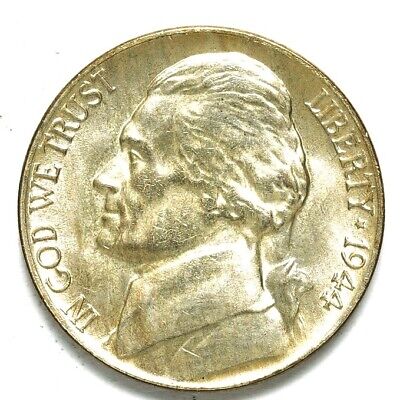The story of the war nickel is a fascinating chapter in the history of American coinage. Produced during a time of global conflict, these coins are a testament to the ingenuity and resourcefulness of the United States during World War II. This article will delve into what makes these 35% silver coins unique, explore their historical context, discuss their design, and evaluate their current value for collectors and investors alike.
Critical For The War Effort
War nickels, also known as silver nickels, were minted by the United States between 1942 and 1945. During World War II, nickel was a critical material for producing military equipment and armaments.

To conserve this essential resource, the U.S. Mint sought alternatives for coinage. In 1942, a new composition for the five-cent coin was approved, consisting of 35% silver, 56% copper, and 9% manganese.
The Unique Composition of War Nickels
The introduction of silver into the nickel’s composition was unprecedented. Before this, nickels comprised 75% copper and 25% nickel. The shift to a silver-based composition not only conserved nickel but also introduced a higher intrinsic value to the coin due to the precious metal content. The 35% silver content makes these coins distinctive among U.S. coinage, as they are the only nickels to contain silver.
Design Features of War Nickels
While the silver content is a standout feature, war nickels also have unique design elements. The obverse of the coin features the familiar profile of Thomas Jefferson, designed by Felix Schlag, which had been used since 1938. However, the reverse underwent a significant change. The original design was replaced with a large mint mark above Monticello’s dome to signify the revised metal content. This mint mark is a crucial identifier for war nickels, with the letter “P” representing the Philadelphia Mint, “D” for Denver, and “S” for San Francisco.
Identifying War Nickels
Collectors can quickly identify war nickels by their mint marks and date range. The presence of a significant mint mark above Monticello, coupled with the production years of 1942 to 1945, confirms a coin’s status as a war nickel. It’s important to note that in 1942, two types of nickels were produced: those with the standard composition and those with the silver composition. Only the coins with the mint mark above Monticello are considered war nickels.
Value of War Nickels
The value of war nickels varies based on several factors, including condition, rarity, and silver content. The table below outlines the general value range for these coins:
| Condition | Value Range (USD) |
|---|---|
| Good (G-4) | $1.00 – $1.50 |
| Very Good (VG-8) | $1.50 – $2.00 |
| Fine (F-12) | $2.00 – $3.00 |
| Very Fine (VF-20) | $3.00 – $5.00 |
| Extra Fine (EF-40) | $5.00 – $10.00 |
| Uncirculated (MS-60) | $10.00 – $30.00 |
While the face value of a war nickel is five cents, the silver content and historical significance contribute to its higher market value. The price of silver also plays a significant role in determining the coin’s value, as fluctuations in the silver market can affect demand.
Tips for Collectors
- Condition: Use coins with minimal wear and precise design details to maximize value.
- Rarity: Some years and mint marks are rarer than others, so research which ones are particularly sought after.
- Authentication: Verify the coin’s authenticity by checking for the significant mint mark and correct date range.
- Storage: Store war nickels in protective holders to preserve their condition and prevent tarnishing.
Conclusion
War nickels are a unique and intriguing part of American numismatic history. Their creation during a pivotal moment in world history and their distinctive silver content and design features make them a valuable addition to any coin collection. Whether you’re a seasoned collector or a novice, understanding the history and characteristics of war nickels can enhance your appreciation for these remarkable coins. As interest in precious metals and historical artifacts grows, war nickels remain a fascinating area for exploration and investment.